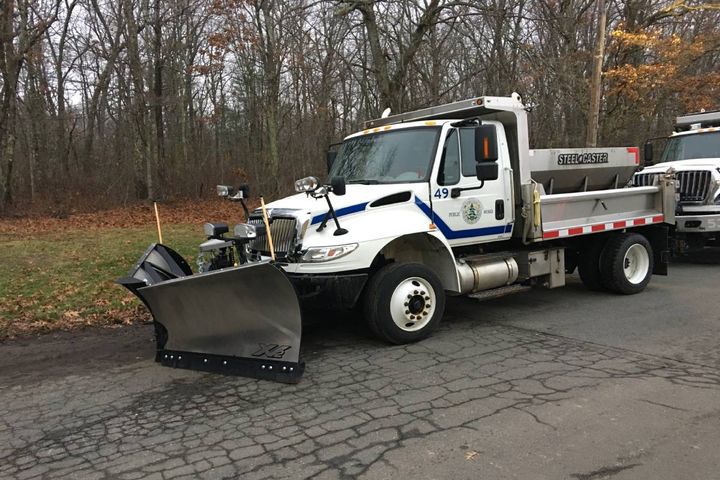Photo: South Windsor Public Works – Street Services
With data collected from telematics, Yeomans is able to track equipment break downs and route progressions.
Scott Yeomans, associate manager for South Windsor, Conn., Public Works – Street Services, initially started out with a first-generation automatic vehicle location system (AVLS) on the fleet he oversees. As upkeep on the equipment began to get intensive and with newer technology available, he did his research, ditched his aging system, and instead selected a vendor he felt was right for his operation.
Now using Synovia Solutions, owned by CalAmp, he’s been able to implement its various features to drastically change how his crews operate for the better.
Valuable Insights
Yeomans watches the city’s street crews via telematics data for a variety of different reasons, such as how they’re progressing on a certain route and tracking where the next day’s workload is going to be.
“We’re currently doing curbside leaf collection. Toward the end of the day, I look and see where the crews have gone so we can project where they’re going to be in the following days. We’ve set up a hotline for our residents so they can call in and get an update of the up-and-coming rounds for the next day,” he explains.
He says in the wintertime, his department along with parks essentially become one and team up for snow removal. Using telematics provides him with an opportunity to see how efficiently employees are working together and progressing through their routes. If for some reason he receives an alert that a vehicle has shut down, he’s able to check on drivers to make sure they are ok.
“Sometimes the driver is just getting up to stretch and get some fresh air. They often put in long hours during these winter storms. If they forget to check in, this gives us another layer of protection to ensure they are safe.”
Dispatching During Daunting Times
The dispatching capabilities of telematics aren’t touted as often as they should be. Yeomans says with his new telematics system, he’s able to make the best decision of who to send where based on who’s the closest to a scene where they are needed. It’s simple to tell which truck is best for the job just by inputting an address.
During major snowstorms, the fire department has been called in to assist medical first responders in the event of a significant snowfall.
“When we hear a medical call, we can quickly jump on to the system, put in the address, and the system will tell me where my closest truck is to that location. We radio dispatch them over to the to the area, and quite often they can get in there and help plow the way to the front of the house that made the call. The EMS folks here are very appreciative and so are the families and patients…even if they didn’t expect to see a fire truck roll up.”
Keeping Residents Informed
When you serve citizens, having accurate, helpful information easily accessible is a must. With data collected from telematics, Yeomans is able to track equipment break downs and route progressions. Toward the end of the day, this enables him to get information out to the residents via the city’s Public Works website and social media as to where trucks will be in the coming days.
“Without a doubt, this technology has helped with both communication and efficiency. It’s hard to imagine running an operation like we have without a telematics system. There would be an overload of radio communication, telephone calls, and even old-fashioned pen and paper. We can now easily monitor where our staff is, how they’re progressing, and formulate a plan from there.”
It also comes in handy when you can tell who’s almost done with their route so they can be called in to assist someone else who may have broken down.
Backing Up Employees with Data
When it comes to snow plowing operations, sometimes Yeomans receives complaints about city snow plows supposedly going over the speed limit.
“Our drivers know the danger in that. With the help of telematics, we are able to go back and exonerate our employees most, if not all, the time. These trucks run at a higher RPM, their lights are flashing, and the snow is blowing. In certain conditions, it can look like a monster coming at you. In reality, the driver is going maybe 20 miles an hour. We can set alert triggers, but we haven’t found the need for corrective action. I can’t recall an incident where a resident complained the truck was speeding and we looked at it and confirmed that.”
by Lexi Tucker
Source: https://www.government-fleet.com
CUT COTS OF THE FLEET WITH OUR AUDIT PROGRAM
The audit is a key tool to know the overall status and provide the analysis, the assessment, the advice, the suggestions and the actions to take in order to cut costs and increase the efficiency and efficacy of the fleet. We propose the following fleet management audit.




